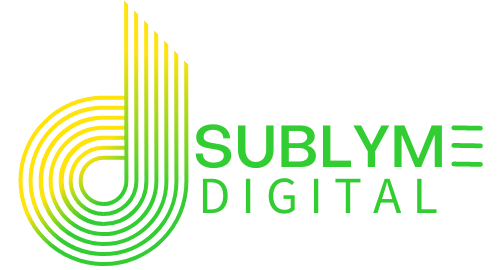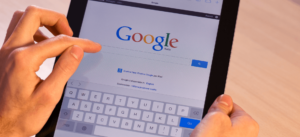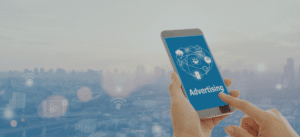
Author: Graham Davidson
Graham Davidson is the Owner and Chief Marketing Guru of Sublyme Digital, leading the agency’s remote-first approach to deliver impactful web design, SEO, and digital growth strategies for businesses across North America.
How AI-Powered Advertising Transform Digital Marketing
The AI Advertising Revolution Has Arrived
Key Takeaways:
- ChatGPT advertising will introduce a new, AI-driven channel for reaching customers—distinct from Google and Meta.
- Early adoption offers unique advantages: lower costs, less competition, and the chance to shape your industry’s narrative.
- Ad formats, targeting, and auction models are likely to mirror—but also innovate upon—existing PPC platforms.
- Organic visibility on ChatGPT is possible now through advanced SEO and answer engine optimization.
- Businesses should prepare now to capitalize on this emerging opportunity and future-proof their marketing.
ChatGPT Advertising Now? The State of Play
What Will ChatGPT Ads Look Like? Formats, Features, and the User Experience
How Much Will ChatGPT Ads Cost? Pricing, Auctions, and the Economics of AI
- Cost Per Click (CPC): Pay when a user clicks your ad or link.
- Cost Per Impression (CPM): Pay for every thousand times your ad is shown.
- Cost Per Action (CPA): Pay when a specific action—like a purchase or signup—is completed.
ChatGPT advertising isn’t just a new channel—it’s a new frontier. The brands that move first, learn fast, and build trust with AI-powered audiences will own the next era of digital marketing.

How Will ChatGPT Ad Auctions Work?
Who Should Advertise on ChatGPT? Target Audiences and Early Adopter Advantages
Is ChatGPT Advertising Worth It?
Can I Appear on ChatGPT Without Advertising?
- Publishing authoritative, well-structured content that answers users’ questions
- Implementing schema markup and structured data for clarity
- Building topical authority through backlinks, citations, and expert mentions
- Creating resources, guides, and FAQs that match the types of queries ChatGPT users ask
FAQs:
Answer: SEO focuses on ranking in traditional search engines. AEO optimizes for voice assistants and conversational AI. GEO ensures your content is discoverable and quotable by generative AI engines like ChatGPT. Holistic Search-Optimization (HSO) is the holistic, integrated approach that brings all three together for maximum digital visibility.
Answer: No. Businesses of all sizes benefit from a unified approach to search, ask, and generative optimization. In fact, smaller brands can gain a big edge by being early adopters
Answer: Start by asking AI platforms about your brand or industry. If your expertise isn’t cited or your answers aren’t featured, it’s time to invest in GEO as part of your Holistic Search-Optimization strategy.
Answer: Regularly. Aim for quarterly reviews, with immediate updates for major industry changes or new data.
Answer: Audit your digital presence, create a unified content strategy, implement schema markup, and begin monitoring your appearance in both search and generative platforms.
Success Stories
365 Data Centers
Discover how we rapidly rebuilt and optimized a 30-page website for 365 Data Centers, restoring their online presence and managing digital ad campaigns across key regions to drive engagement and growth.
XTECH Football Pads
Discover how we transformed XTECH Football Pads‘ digital presence, boosting their online sales and tripling website traffic through innovative website development and user experience enhancements.
BeEarth Foundation
Discover how we partnered with the BeEarth Foundation to develop a website that aligns with their mission of sustainability and global engagement. Our work has significantly increased their online visibility and engagement, supporting their efforts to promote sustainable development.
We Recycle Solar
Learn how we illuminated digital success for We Recycle Solar by completely redesigning their website to reflect their leadership in the growing solar recycling industry and implementing strategic digital advertising campaigns that enhanced their visibility at key industry events.
Preferred Home Health Care & Nursing Services
Explore how we elevated the digital presence of Preferred Home Health Care & Nursing Services by enhancing their website for better lead generation, building a dedicated site for staff recognition, and optimizing SEO for their location pages.
What Our Clients Say: Elevating Online Success
We Build Cool
The Road Ahead
The dawn of ChatGPT advertising is a watershed moment for digital marketing. For business owners, it’s both an exciting opportunity and a complex challenge. Success will require a blend of creativity, technical know-how, and strategic agility.
Here’s how to get started:
Audit Your Digital Presence: Review your website, content, and HSO to ensure you’re ready for both organic and paid visibility.
Define Your Goals and Audience: Clarify what you want to achieve with ChatGPT advertising—brand awareness, lead generation, direct sales—and who you want to reach.
Stay Agile and Informed: The landscape will evolve rapidly. Be ready to test new formats, measure results, and adapt your strategy as ChatGPT’s ad platform matures.
Don’t Just Advertise—Lead the Conversation
Let's Build Something Sublyme
Ready to future-proof your marketing and claim your place in the AI-powered ad revolution?
Contact Sublyme Digital today for a free digital audit and strategy session. Let’s build your next revenue channel—together.



